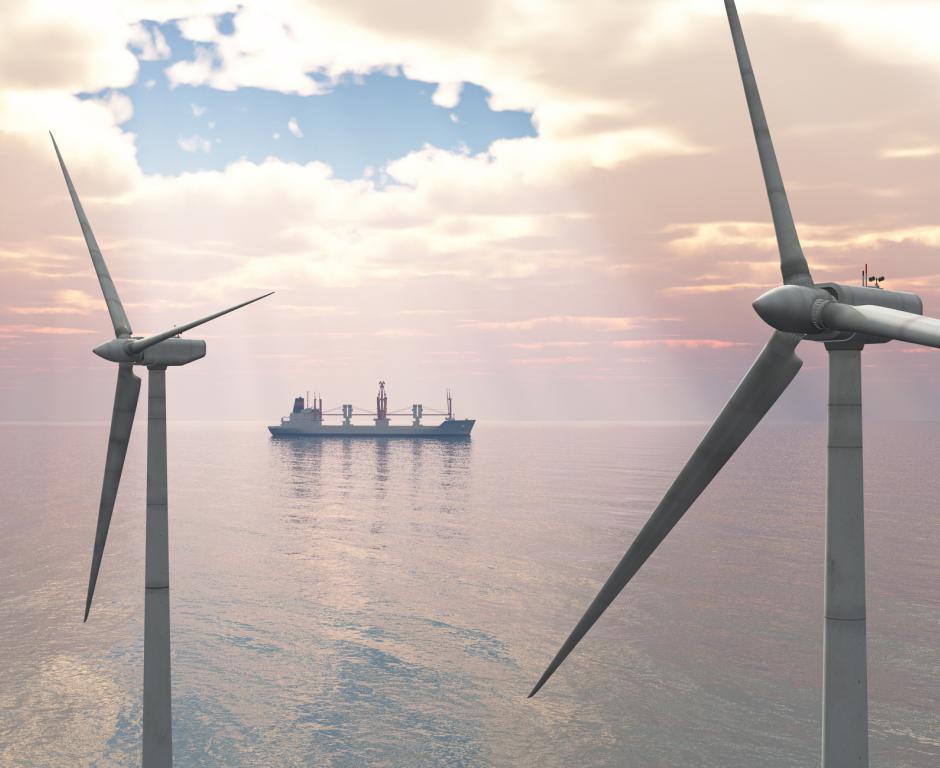Maximising the benefits for Åland
The establishment of an offshore wind farm proceeds in several stages. During the preparatory phase, Sunnanvind's task is to develop a spatial plan, including an environmental assessment, and to establish concepts and strategies for the competitive tendering of the rights to utilise the marine areas for energy production. The primary objective for Sunnanvind is to produce documentation that safeguards the interests of Åland in the agreements governing the establishment, operation and decommissioning of the offshore wind farm.
The Sunnanvind project is largely funded by the EU Recovery and Resilience Facility [EUR 2.8 million]. The project's final report is to be submitted to the European Commission by 30 June 2026.
Sunnanvind goals
Economic growth
The development of the maritime areas identified as suitable for offshore wind power in the Åland Maritime Spatial Plan is expected to generate significant option and lease revenues for the Government of Åland as well as property tax revenues for the municipalities over a long period of time.
Employment
Offshore wind power creates numerous new job opportunities. Local businesses are anticipated to be assigned subcontracting tasks throughout the construction phase, while opportunities in operations and maintenance will arise during the operational phase.
Knowledge
Offshore wind power requires expertise in various fields. The development of offshore wind power provides opportunities for institutions to offer specialized education and training, as the industry is in need of a steady supply of new personnel. Åland offers a suitable testbed for new solutions in renewable energy.
Environment and sustainability
Once fully developed, renewable energy production from Åland's maritime areas can play a crucial role in the Nordic energy market. By building offshore wind farms far out at sea, more unique environments in the Åland archipelago can be preserved for future generations.
Impact goals
The Government of Åland has approved project guidelines for Sunnanvind containing impact targets. Project development is divided into Sunnanvind Alfa and Sunnanvind Beta, each with a separate set of impact goals.
Impact goals - Sunnanvind Alfa
- Develop a uniform and comprehensive municipal master plan for the identified marine areas, enabling a smoother authorisation process.
- Increase the lease value of marine areas by conducting targeted actions to shorten the time to market, reducing risks for investors and promoting faster market uptake.
- Develop a well-defined and streamlined permitting process for the establishment of offshore wind farms.
- Develop an infrastructural plan for the establishment of wind farms that provide the best results in terms of both revenue streams and other possible benefits to Åland ( including system aspects such as grid connections, green hydrogen, harbour needs etc.)
- Prepare lease agreements and auction processes.
- Develop processes and organization for managing and administering activities needed for capturing the potential of offshore wind power.
Impact goals - Sunnanvind Beta
- Plan, prepare and implement competitive tendering by auction of maritime areas for the development of offshore wind power north of Åland.
- Define a business model for this auction to maximise the direct economic outcome for Åland.
- Conduct market analysis and dialogue to gather input for establishing the business model and conducting the auction.
- Conduct a risk assessment for the project implementation, taking into account various scenarios of possible changes in the conditions for the realisation of the project.
Communication
An integral part of the Sunnanvind project is an open dialogue and cooperation with all relevant stakeholders. The Sunnanvind project communication plan includes engagement with the following stakeholder groups:
- The political government (landskapsregeringen), the parliament (lagtinget), the finance and economic affairs committee (finans- och näringsutskottet).
- Administration and municipalities.
- The local community, the Åland population.
- Ministries and departments.
- Local and national authorities.
- Local businesses.
- Wind power industry companies.
- Wind power industry consultants.
- Transmission system operators.
- Education and research institutions.
- Local and international media.





